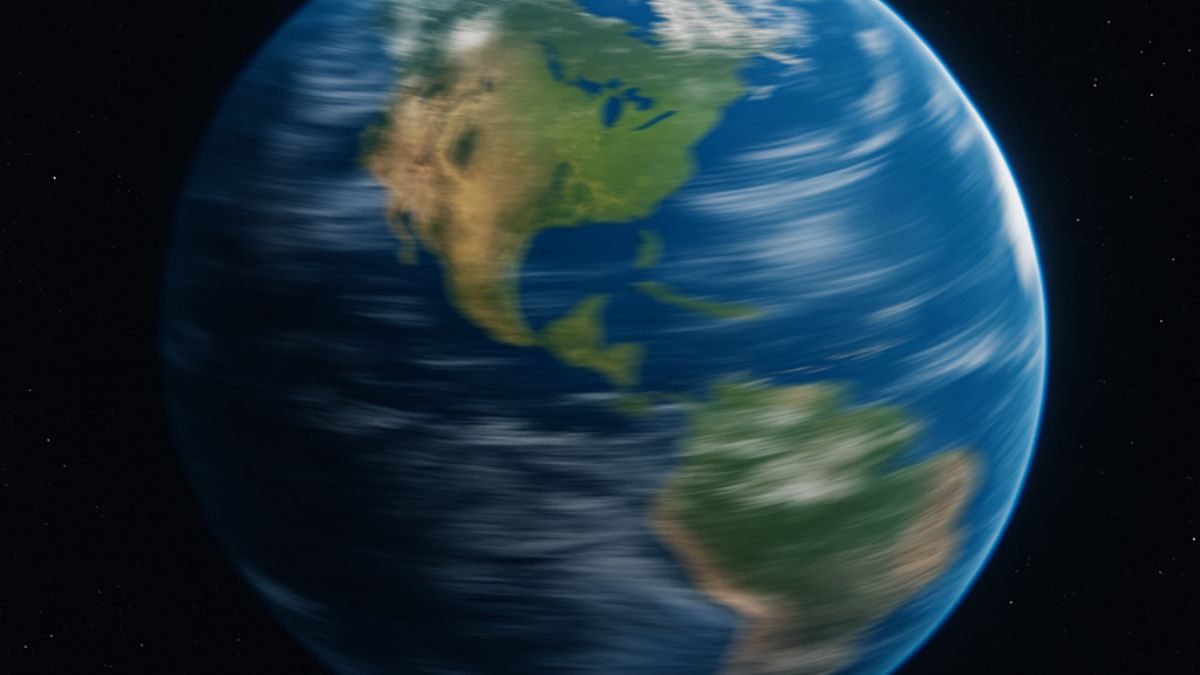New York: Something strange is happening with time this summer—literally. Scientists have predicted that July 9, July 22, and August 5, 2025 will be slightly shorter than normal. We’re talking milliseconds, but in the precise world of timekeeping and planetary science, every millisecond counts. Earth is spinning faster on its axis, and these three dates are expected to be the shortest days we’ve seen in years.
Why is this happening now? The answer lies in a fascinating mix of gravitational physics, climate change, and planetary mechanics. From the Moon’s shifting position to human-driven alterations like groundwater loss, multiple forces are nudging Earth to turn a bit quicker—kind of like a figure skater pulling in their arms.
This article breaks down what’s really happening beneath your feet, how much time we’re “losing,” and why it matters (even if you won’t feel it). It’s a reminder that even the things we take for granted—like the length of a day—are quietly evolving.
Also Read: Why Did Red Bull Fire Christian Horner? What We Know So Far
Is Earth’s Rotation Really Speeding Up?
Yes, and this isn’t just a random blip. According to timeanddate.com, Earth’s spin has been breaking records since 2020. In fact, the shortest day ever recorded occurred on July 5, 2024, when the planet completed a full rotation 1.66 milliseconds faster than the standard 86,400 seconds (or 24 hours).
Now, scientists are predicting three more ultra-short days in 2025:
- July 9: 1.30 milliseconds shorter than 24 hours
- July 22: 1.38 milliseconds shorter
- August 5: 1.51 milliseconds shorter
These measurements come from atomic clocks, which are accurate to the nanosecond and help define Coordinated Universal Time (UTC).
Also Read: Next Full Moon Is July’s Buck Moon: When and How to Watch
What’s Causing the Earth to Spin Faster?
Several factors are involved, and they all come down to how mass moves on and around our planet.
1. The Moon’s Gravitational Position
When the Moon is far north or south of Earth’s equator, it alters the gravitational pull on Earth’s axis. On July 9, 22, and August 5, the Moon will be in this “off-equator” position, effectively giving the Earth a slight push to spin faster—like giving a merry-go-round a solid nudge from the side.
2. Climate Change & Mass Redistribution
Research from NASA shows that melting ice caps, groundwater loss, and rising seas are literally reshaping Earth’s mass distribution. Just like an ice skater spins faster when pulling in their limbs, Earth spins faster when its mass shifts closer to the core.
3. Seismic and Seasonal Changes
Even natural events like earthquakes (like Japan’s 2011 quake, which shortened the day by 1.8 microseconds) and seasonal tree growth in the Northern Hemisphere can redistribute mass, ever so slightly tweaking the planet’s momentum.
So… Will We Notice These Shorter Days?
Not at all—at least not with our eyes or clocks.
Our smartphones, computers, and digital devices still count a day as 24 hours. A millisecond (that’s one-thousandth of a second) is imperceptible to humans. But to scientists, this is a big deal.
If the rotation speeds up too much, atomic time (UTC) begins to drift from astronomical time (Earth’s actual spin). When that difference exceeds 0.9 seconds, scientists must adjust by inserting a “leap second” to keep everything aligned—just like we add a leap day to our calendars every four years.
Why This Matters More Than You Think
Even though we can’t feel the shift, the consequences ripple into space travel, climate models, and satellite systems. A faster spin can affect GPS accuracy, space station navigation, and even climate data interpretation.
Moreover, these changes are a subtle reminder that our planet is not static. It’s a dynamic system, constantly influenced by the Moon, Sun, ice sheets, forests, and even us. It also means that in the future, our global timekeeping systems may need more frequent corrections—something scientists are already preparing for.
Earth’s Spin, Your Life
You may not feel 1.5 milliseconds vanish from your day, but the fact that Earth is picking up speed is a powerful reminder: even time is not fixed. It’s a dance of gravity, motion, and planetary balance. And while we live in the illusion of 24-hour precision, nature is quietly reminding us who’s really in charge.







